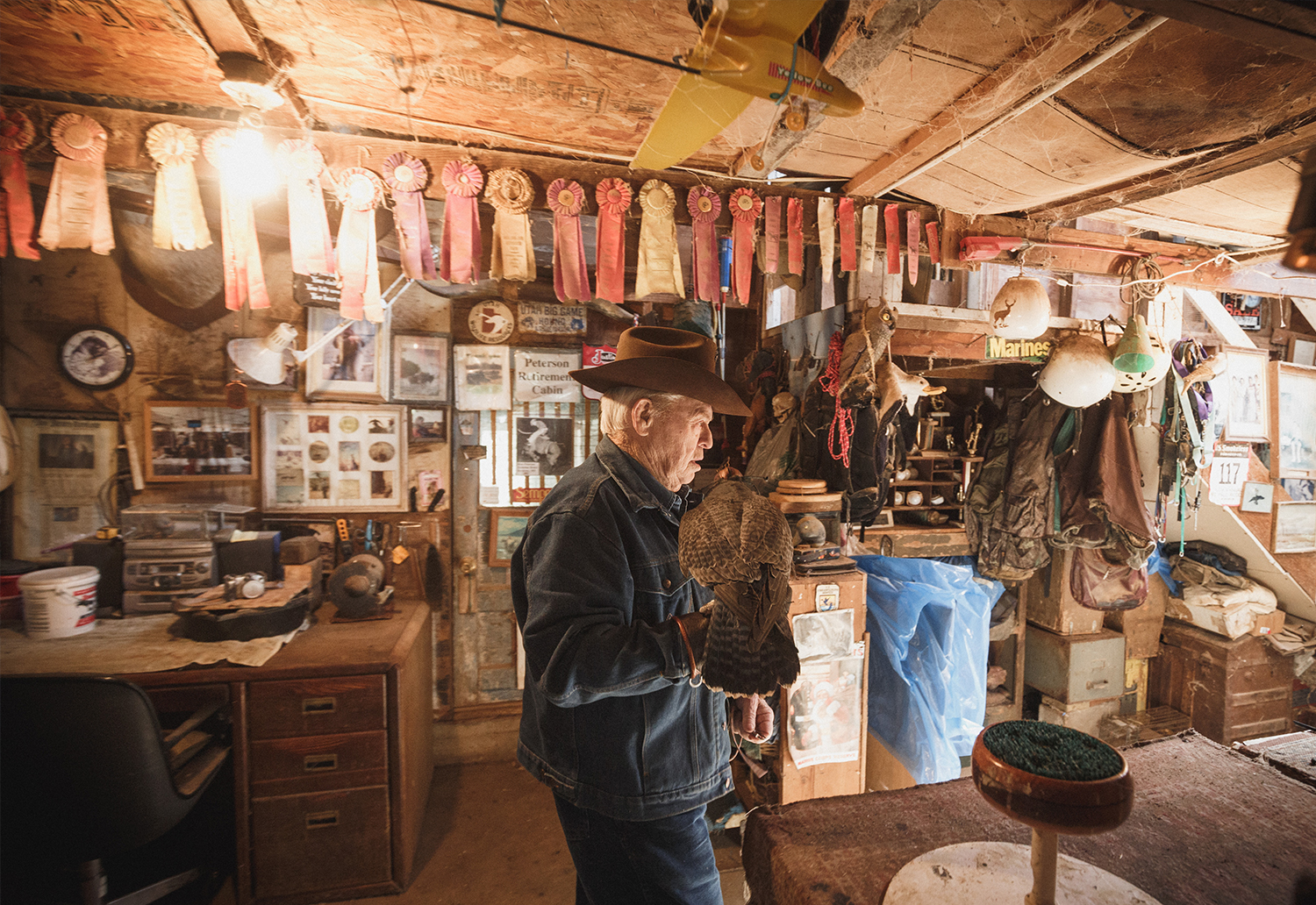High-Flying Hobby

The sport of falconry is thousands of years old, and for the last 50 of those it’s been a big part of Dave Peterson’s life.
Story by Brandon Johns Photo by Tom Boyd
I’ve spent most of my life riding horses, training dogs and flying falcons. The rest I have just wasted.”
This is how Dave Peterson sums up his life. But even without the smile he attaches to the comment, it’s obvious he has not wasted more time over the course of his personal, professional and retired lives.
After earning a master’s degree in wildlife sciences, Peterson traveled the U.S. working as a biologist. His work ranged from capturing and tagging bobcats to helping get the Columbia whitetail deer off the endangered species list.
He’s trained hunting dogs and operated a kennel, wrestled in the Marine Corps, established an Arabian horse-breeding program and even, as a young man, rodeoed.
“Saddle bronc and bareback mainly, but seems like my biggest success was in the wild cow milking contest,” Peterson says, his sense of humor showing through.
But none of it captured his enthusiasm quite like falconry.
“I became enthralled with hawks and falcons in my early teens living in Missouri. I would watch kestrels for hours,” says the master falconer. Kestrels are a fairly common, dove-sized hawk seen around Douglas County, too.
“Back in the ‘40s and ‘50s, there was little available literature on falcons,” he says. “Then I came across an old National Geographic article on a pair of brothers that were doing falconry. That became my new ‘Bible’ on falcons.”
Peterson’s falconry journey began in earnest when he climbed a tree as a youngster and captured a young, red-tailed hawk.
“This was before any regulations, mind you,” he says. “In fact, there was even a predator bounty on them in those days.”
That was about 65 years ago. Subtract the 15 years when he was in the Marines, and Peterson reckons he’s been a falconer for a half-century.
These days, the Oregon Department of Fish and Wildlife requires a permit to capture a raptor, and there’s a season as well. Before the permit is issued to an apprentice falconer, he or she must be sponsored for two years by a master or general class falconer with two years’ experience. Then the would-be falconer must pass a written test and have a raptor facility inspected and approved.
The taking and training of birds for falconry has had little impact on wild populations, according to a study conducted by the U.S. Fish and Wildlife Service.
Peregrines are able to fly to a great height and then dive steeply at speeds of more than 200 mph.
“Eighty percent or more of young birds, particularly Peregrines, don’t survive their first year,” Peterson says. “Falconers start with young birds, so older birds stay in the wild as breeding stock.”
Peterson currently has a pair of Prairie falcons and a pair of his favorite raptors, the Peregrines. He describes how a diving Peregrine can reach speeds faster than any animal on the planet. Peregrines are able to fly to great heights, then dive steeply at speeds reaching more than 200 mph. In 2005 one was recorded diving at 242 mph.
The Peregrine has been used in falconry for more than 3,000 years, but at one point was all but wiped out in the United States. Commonly used pesticides, including now-banned DDT, caused the shells of the falcon’s eggs to become very thin, resulting in eggs breaking or preventing offspring from developing.
By 1970, when the falcon was listed as an endangered species by the U.S. Department of the Interior, midwest and eastern populations were virtually extinct; western numbers had declined by as much as 90 percent from historical levels.
Falconers were instrumental in the Peregrine’s recovery.
Unlike wild birds, captive specimens were not exposed to the pesticides and were able to supplement what remained of healthy breeding stock in the wild. The Idaho-based Peregrine Fund and private breeders helped state and federal wildlife agencies release more than 6,000 falcons into the wild.
Peterson was directly involved with the Peregrine reintroduction effort during the 1980s while he was working for Utah’s state Division of Wildlife Resources. In 1999, numbers had improved to the point that the raptor was removed from the federal list of threatened and endangered species. But Peterson continued monitoring Southwest Oregon numbers from the Roseburg office of the federal Fish and Wildlife Service before retiring in 2004.
During his five decades as a falconer, Peterson has raised and trained more than 100 raptors, including goshawks, red-tailed hawks and merlins, in addition to Peregrines.
“I’ve also trained a dozen or so apprentices,” he says. “One of my former apprentices was the youngest licensed falconer in Oregon. She was 14 and you just couldn’t find a bird she didn’t know.”
Peterson still enjoys teaching people about the birds and often gives talks on “Raptor Ecology and Falconry” to school groups and others.
At one point, Peregrines were all but extinct in the United States. Falconers were instrumental in their recovery.
He acknowledges, however, that beginning falconers need much more knowledge than just attending a presentation. For example, aspiring falconers need to be up to date on bird health, the type of bird they want, how to care for it and where to find it.
An additional aspect that can be tricky is learning a raptor’s habits. The birds hunt only when they are hungry and spend the balance of their time conserving their energy. Thus, in addition to monitoring the bird’s weight, diet and behavior to maintain its health, falconers must study the bird to learn when it is ready to eat and therefore ready to hunt.
“The key to falconry is to remember that you are hunting partners,” Peterson says. “There is no negative reinforcement with these birds; you can’t scold them.”
For Peterson, the joy of falconry is not the prey but the hunt.
“It’s not about how much game you put in the bag,” he says. “Some of the best days we had, we never caught a thing. But when the falcons were engaged in the hunt, we watched some truly amazing flying.”
It’s that kind of thrill that keeps Peterson a falconer. He has no plans to give up his life’s passion.
“I’m not very bright, so I will probably keep doing it,” he says with a smile.






